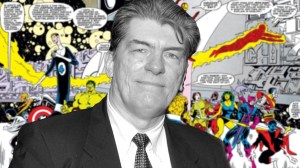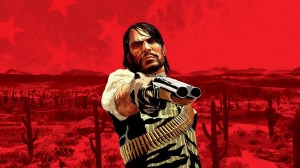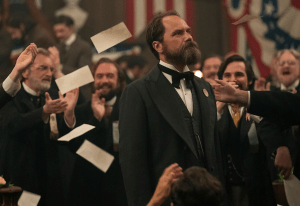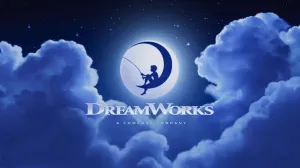The comic book world recently mourned the loss of a true legend: Jim Shooter, superhero writing wunderkind and former Marvel Comics Editor-in-Chief, who passed away earlier this month. While his extraordinary life in comics — and the outsized influence he had on the industry, particularly at Marvel — has been well-documented in the many poignant tributes published since his death. Though Shooter’s impact on comics is widely acknowledged —including his role in nurturing some of the industry’s most iconic creators or his effort to improve how artists get paid for their work— his pioneering work in shaping the modern crossover event remains an underreported part of his legacy.
Videos by ComicBook.com
The superhero crossover event, where characters from different titles or universes —typically confined to their own narratives—join forces against a common foe or pursue a shared goal within a unified narrative, has transformed comic book publishing and become a crucial element in superhero storytelling from both creative and commercial perspectives. However, it’s unlikely the crossover event would ever have existed without Jim Shooter’s Secret Wars.
Secret Wars and the Birth of the Crossover Event

While Jim Shooter was an undeniably creative force, it’s unlikely he would have conceived the idea for Secret Wars without a little help from the toymaker Mattel. He even acknowledged this in a 2011 post to his personal blog JimShooter.com. According to Shooter, Mattel grew concerned after its competitor, Kenner Toys, struck a deal with DC Comics to produce the Super Powers Collection — a line of action figures based on DC characters. Consequently, they approached Marvel about creating their own collection of Marvel action figures. During discussions, Mattel requested that Marvel promote the collection with a special event, such as a double issue or a limited series.
Mattel provided a list of characters they believed would be most suitable, along with suggestions on how some of these characters could be modified to make them more appealing to their customers. In response, Shooter proposed that an epic story featuring most —if not all— of Marvel’s current characters would be the ideal vehicle to fulfill Mattel’s goals. But there was a problem, Shooter needed to resolve before work could begin.
While crossovers weren’t new at the time, they typically required a great deal of managerial finesse. Although the characters were Marvel’s intellectual property, writers often treated the ones they worked on as their own. As a result, few were willing to hand over control of their characters — even for a single issue — to another writer. To avoid the complications this would create for the special “event” comic Mattel wanted, Shooter decided to write it himself. As Editor-in-Chief, Jim Shooter had a bird’s-eye view of the entire Marvel Universe and direct access to all the creative teams working on the individual titles and characters. At the same time, he wasn’t personally tied to any one character or series in a way that might bias their portrayal in the story. It was a near-perfect decision for launching the crossover event.
The Genius Jim Shooter’s Crossover Event Architecture

The event, which ultimately became a 12-issue limited series, was a massive undertaking unlike anything attempted before, largely for the reasons Shooter had alluded to. However, Shooter was well-equipped to handle the challenge. First and foremost, he was an exceptionally creative writer in his own right. Having written comics since the age of 14, his earlier work on Legion of Super-Heroes gave him valuable insight into successfully weaving together multiple characters, each with their own storylines, into one narrative.
Second, he respected the work and commentary of Marvel’s editorial and writing staff, who were never shy about voicing their opinions on how characters should be portrayed in the series. He acknowledges they knew the characters better than him. This feedback was instrumental in crafting a multifaceted story that remained faithful to continuity. He likely couldn’t have pulled off the event if he had simply written it according to his own vision. Thanks to that collaborative effort, he succeeded in uniting nearly the entire Marvel Universe within a single, cohesive series. It was a daunting task, but once completed, it became —as Shooter himself put it— “a staple of comic book publishing.”
The Legacy of Jim Shooter’s Secret Wars

While the idea may have originated from a toy company’s slick attempt to sell more products, it inspired Jim Shooter to challenge the traditional approach to superhero storytelling, one shaped by overly protective writers who kept their characters siloed within their own narratives. By bringing all the heroes together in a single title, Shooter demonstrated that crossover stories could be both compelling and complementary to individual series. He also proved that when crossovers are centrally organized — rather than developed in an ad hoc or organic fashion — they can become blockbuster events with wide-reaching continuity implications. It’s hard to describe how momentous a change this was for superhero culture at the time.
As Shooter mentioned, his framework became the blueprint for special events in superhero comics, influencing how superheroes are commonly depicted in films and on television. Based on his recollection, the genius of the entire “event” wasn’t just the story itself, but also the brilliant strategy behind it. This strategy involved collaborating with non-comic partners, uniting writers, attracting readers, and delivering compelling content. As fate would have it, it was a story and strategy that only Jim Shooter could have pulled off.









